by Rabbi Jeffrey Adler
In our previous dealings with Ezekiel 37, the famous “Vision of the Valley of Dry Bones”, we saw God take the prophet to the floor of a valley filled with dead, dry bones, representing the apparent destiny of the Jewish people after centuries of our defiance of Adonai and His Torah and prophets. Survival seemed hopeless; we were, apparently, going the way of so many other nations and people groups who had become extinct through the pages of the history books. But, Elohim instructed the prophet to receive and pass on a proclamation of hope and life, deliverance and restoration, a message impossible to give, were it not for the limitless love, grace, and power of Adonai. The opening verses portray a vision of healing and resurrection for a people portrayed as “dead, dry, lifeless, hopeless, bones”. The scattered bones on the floor of a valley are joined together and, suddenly, at least have some form, the beginnings of some identity.
Verse 8 of Ezekiel 37 leaves us with a scene of bones joined together to give form, but, there is no life or function. Elohim addresses this: “Hinavay” (again, the imperative of the niphal stem, the passive voice of the verb ‘to prophesy’, indicating that Ezekiel is not speaking of his own volition, but, is being acted upon by the very Ruach of Adonai), “Prophesy to the Ruach. Prophesy, son of man, and say to the Ruach, thus says Adonai Elohim, ‘Come from the four winds, Ruach! Breathe upon these slain or, murdered), that they may live.’ So I prophesied just as He commanded me. The Ruach came into them and they lived. They stood up on their feet, a vast army.” Moments before, Israel was portrayed as a mess of scattered, dead, dry bones with no sense of identity or form. After the intervention of Elohim, they are now “chayil gadol, m’od, m’od”. “Chayil” is used in the Hebrew text with a broad semantic range. In Proverbs 31:10, it describes “eshet chayil”, a woman or wife of strength or virtue. In Zechariah 4:6, it refers to power, wealth, or influence. Here, in Ezekiel 37, it refers to an army, the capacity to exert influence and bring about change. They are not only an army, but, a very, very great army. Now they have life and vitality. The ability for Israel to become the “Kingdom of kohanim (priests) and a holy nation described in Exodus 19:6 as Israel’s calling is dependent on the indwelling of God’s Spirit, as demonstrated here.
Beginning in verse 11, Adonai describes more clearly what Ezekiel has been seeing. “Son of man, these bones are the whole house of Israel. Behold, they say: Our bones are dried up; our hope is lost; we are cut off- by ourselves. Therefore prophesy and say to them, thus says Adonai Elohim: ‘Behold, I will open your graves. I will bring you up out of your graves, My people. I will bring you back to the land of Israel. Y’datem (again, the perfect tense of ‘yada’, to know) that I am Adonai, when I have opened your graves and brought you up out of your graves, My people. I will put My Ruach in you, and you will live (chayitem). Then you will know that I, Adonai have spoken and that I have done it.’ It is a declaration of Adonai.”
Ezekiel uttered this prophecy in the 7th century B.C.E. So much time passed that many of the greatest Bible scholars came to assume that God must have had a different meaning of the text. This led to replacement theology, that the church had replaced Israel, who were now seen to have no more national place in God’s plans. However, Adonai is not bound by the passage of time. After 26 centuries, on May 14th, 1948, the “pipedream” of Ezekiel became historical reality and the state of Israel was reborn. Israel now has renewed form; the day is fast approaching when she will also have new life as the Spirit will also come into her. Let us redouble our prayers and efforts for her to know that He is Adonai and has done it.
Rabbi Jeffrey Adler is president of the Board of HaShomer and also Rabbi of Sha’arey Yeshua in Indianapolis, IN.
